|
T H E S O U N D S O F E U R O P E A N R E V I V A L H A R P S I C H O R D S
|
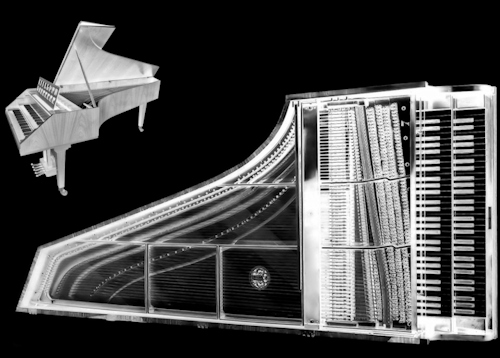
|
|
AMMER www.ammer-cembalo.de
Ammer was one of several German manufacturers of mass-produced harpsichords, or Serien Instrumente. Founded in 1927 and located in Eisenberg, in what later became East Germany, Ammer harpsichords were found throughout Eastern Europe and can be heard on nearly all the Supraphon recordings by Zuzana Růžičková and Josef Hála and early Hungaroton recordings by János Sebestyén. Austrian harpsichordist Isolde Ahlgrimm used two early Ammers, one from 1937, the other from 1941, to record her famous Bach edition for Philips in the 1950s. In 1974, under the direction of Jürgen Ammer (1945-2017), the company began building instruments based on historical models at a new workshop in Leipzig. The firm closed in 1988, although Jürgen Ammer continued building historical instruments at his workshop in Schauenburg. JOHANN SEBASTIAN BACH
Philips A 00172-74 L (LP) Recorded 1952
BOHUSLAV MARTINŮ
SERGEI PROKOFIEV
JIŘI ANTONÍN BENDA
CARL PHILIPP EMANUEL BACH |
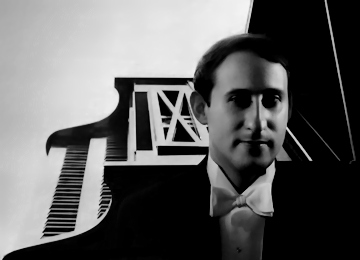 Rafael Puyana |
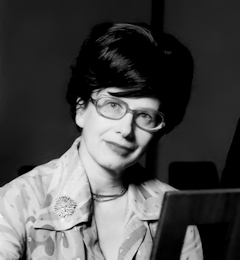 Zuzana Růžičková |
|
GOBLE www.gobleharpsichords.co.uk
Robert Goble (1903-1991), builder of harpsichords and clavichords, worked with Arnold Dolmetsch for twelve years before setting up his own workshop in Oxford, England in 1937. His instruments, known for their quality and reliability, were found throughout Europe. George Malcolm claimed it as his favorite harpsichord and used it for many recordings, including a solo Bach recital and series of Bach concertos for EMI, as well as his Decca recording of concertos by J. C. Bach and Haydn. Other notable recordings include Raymond Leppard's cycle of Bach's harpsichord concertos for Philips and Genoveva Gálvez's many solo and ensemble recordings for Hispavox. The Goble workshop continues to operate today, offering historical instruments. VIKTOR KALABIS
HAMU HF 0006 2131 (CD) Recorded 1999
JOHANN SEBASTIAN BACH
RAFAEL ANGLÉS
MANUEL PONCE
WALTER LEIGH |
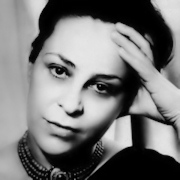 Isolde Ahlgrimm |
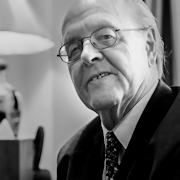 Josef Hála |
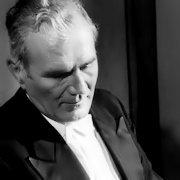 Fritz Neumeyer |
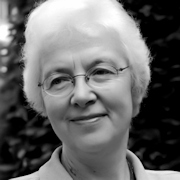 Giedré Lukšaité-Mrázková |
|
GOFF
Thomas Goff (1898-1975) was a London builder of clavichords and harpsichords. He built only one type of harpsichord: a large two-manual instrument, elaborately veneered, with a complicated action that offered the performer some control over dynamics through the use of pedals. Goff sold few of these instruments, preferring to keep them as rentals. His harpsichords, with their unique and immediately identifiable sound, became familiar through Thurston Dart's many L'Oiseau-Lyre recordings, George Malcolm's popular Decca recordings, and Valda Aveling's famous Scarlatti recitals. Goff instruments played by George Malcolm and friends were also featured at the annual concerts of music for four harpsichords held at London's Royal Festival Hall during the 1950s and 60s. DOMENICO SCARLATTI
Decca LL 963 (LP) Recorded 1953
GEORGE MALCOLM
THOMAS ARNE
CARL PHILIPP EMANUEL BACH (arranged by RAYMOND LEPPARD)
ALEC TEMPLETON |
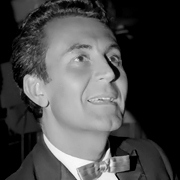 Robert Veyron-Lacroix |
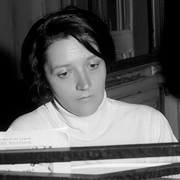 Anne-Marie Beckensteiner |
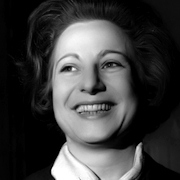 Huguette Dreyfus |
|
NEUPERT www.jc-neupert.de
The German piano firm of J. C. Neupert began building harpsichords in 1906, eventually becoming the most ubiquitous of the Serien instrument manufacturers. Their harpsichords were found everywhere and were played, at some point, by nearly every harpsichordist active during the 20th century revival of the instrument. Even performers long-associated with historic instruments, such as Gustav Leonhardt and Blandine Verlet, took their turn. Notable recordings of Neuperts include Ralph Kirkpatrick's 1950s Bach series for Archiv, Karl Richter's many recordings for both Archiv and Telefunken, and Ruggero Gerlin's 1963 cycle of all the Bach concertos for Critère. Zuzana Růžičková, Luciano Sgrizzi, and Robert Veyron-Lacroix made several recordings on Neuperts for Erato, among them Veyron-Lacroix's second traversal of Bach's concertos in 1968. Located in Bamberg, Neupert still offers their Serien instruments, although their focus is now on historical models. JOHANN SEBASTIAN BACH
Vanguard/Bach Guild BGS 5070 (LP) Recorded 1962
JOHANN SEBASTIAN BACH (after ANTONIO VIVALDI)
MANUEL BLASCO DE NEBRA
CARL PHILIPP EMMANUEL BACH
BÉLA BARTÓK |
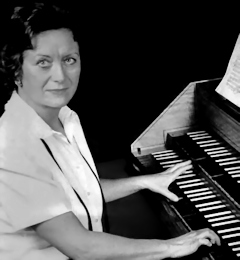 Genoveva Gálvez |
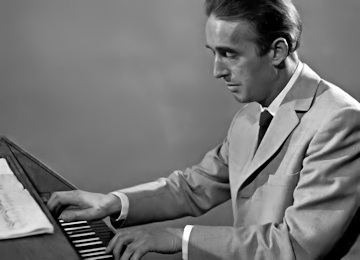 George Malcolm |
|
PLEYEL
The French piano manufacturer Pleyel began building harpsichords in the late 1880s, but it was not until their association with the legendary Wanda Landowska in the early 20th century that their harpsichords became famous. Landowska worked with the Pleyel engineers to produce a unique harpsichord that met her specifications, and this is the instrument she used throughout her career for concerts and recordings. Her students were expected to follow her example, resulting in dozens of recordings on Pleyel harpsichords by Ruggero Gerlin and Isabelle Nef for L'Oiseau-Lyre. In the United States, Sylvia Marlowe recorded on a Pleyel for Capitol, Rafael Puyana for Mercury, and Irma Rogell for Mnemosyne. Pleyels were also used by musicians outside of Landowska's circle, particularly in France. Examples include Robert Veyron-Lacroix's first traversal of Bach's concertos for Erato in 1959, as well as solo and ensemble recordings by Anne-Marie Beckensteiner, founding member of Jean-François Paillard's famous chamber orchestra. JOHANN SEBASTIAN BACH (doubtful attribution)
L'Oiseau Lyre OL 50097 (LP) Recorded 1955
JOHANN SEBASTIAN BACH
WILHELM FRIEDEMANN BACH
ALEXANDER VOORMOLEN
GEORGE FRIDERIC HANDEL |
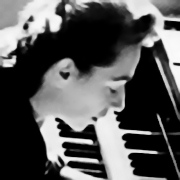 Irma Rogell |
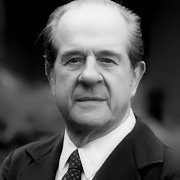 Ruggero Gerlin |
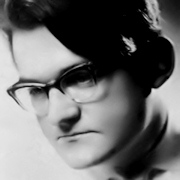 Martin Galling |
|
SASSMANN
Martin Sassmann spent the war years as a Messerschmitt pilot before beginning work for Neupert in 1948. He started his own workshop in 1955, finally settling in Hückeswagen, Germany in 1966. His early instruments were of the Serien style, but by the late 1960s he began moving toward a more historical design and continued on this path until the company closed sometime after 2000. Heinz Jansen's Südwest-Tonstudio in Stuttgart, responsible for hundreds of recordings for Vox, seems to have had Sassmann instruments at their disposal, and these can be heard in many solo and ensemble recordings, including Martin Galling's complete edition of Bach's solo harpsichord music. JOHANN SEBASTIAN BACH
Vox Box SVBX 5434 (LP) Recorded circa 1964
WOLFGANG AMADEUS MOZART (after JOHANN CHRISTIAN BACH)
MANUEL DE FALLA
KARL DITTERS VON DITTERSDORF
JOHANN SEBASTIAN BACH |
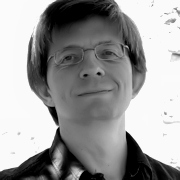 Miklós Spányi |
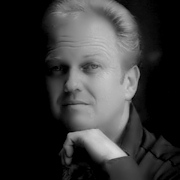 Malcolm Hamilton |
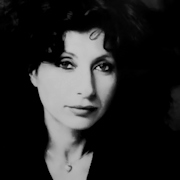 Elisabeth Chojnacka |
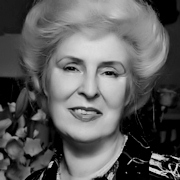 Elżbieta Stefańska |
|
SPERRHAKE
The Sperrhake workshop in Passau, Germany was at one time the largest producer of Serien style instruments. Its founder, Kurt Sperrhake, built pianos and sold Ammer harpsichords before starting his own company in 1948. At its height, the workshop employed 60 people and, thanks to a successful network of agents, their instruments received widespread distribution. Sperrhake apparently never made the transition to historical instruments before the workshop closed. Parts and information for their instruments are still available from Neupert. Despite their widespread use, Sperrhakes have not fared as well on recordings. For Erato, Zuzana Růžičková recorded Bach's English Suites, Luciano Sgrizzi made four LPs devoted to Handel and Scarlatti, and Elisabeth Chojnacka recorded a Soler recital in addition to contemporary works. Sperrhakes were purchased by several of the important musical institutions in Hungary during the 1970s, resulting in many recordings by János Sebestyén for Hungaroton and Hungarian Radio. Miklós Spányi played Sebestyén's personal instrument for his recording of the concertino by Ferenc Farkas. JOHANN SEBASTIAN BACH
Erato ERA 9040-42 (LP) Recorded 1972
CARLOS SEIXAS
ANTONIO SOLER
FERENC FARKAS
JOSEPH HAYDN |
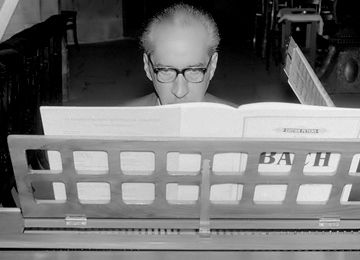 Luciano Sgrizzi |
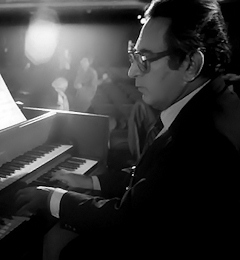 János Sebestyén |
|
WITTMAYER
Wittmayer was yet another prolific producer of Serien style instruments. Founded by Kurt Wittmayer and located in Wolfratshausen, Germany, his workshop eventually began producing instruments based on historical models in the late 1960s after some experiments with electrical internal amplification. The most famous recorded example of a Wittmayer is undoubtedly Glenn Gould's Handel suites for CBS, his only commercial harpsichord recording. Other notable recordings of Wittmayers include Isolde Ahlgrimm's series of Bach recordings for the Swiss label Belvedere, Robert Veyron-Lacroix's sought-after Bach recordings with Reinhold Barchet for Erato, and organist Lionel Rogg's Buxtehude recital played on his Wittmayer pedal harpsichord. In the United States, Malcolm Hamilton was apparently devoted to his 1962 "Bach" model, using it to record Bach's Well-Tempered Clavier for Everest, Scarlatti and Handel for Delos, and concertos by C. P. E. Bach for Nonesuch. CARL PHILIPP EMANUEL BACH
Los Angeles Chamber Orchestra conducted by Gerard Schwarz Nonesuch D 79015 (LP) Recorded 1980
DOMENICO SCARLATTI
JOHANN SEBASTIAN BACH
DIETRICH BUXTEHUDE
JOHANN SEBASTIAN BACH |
|
T W O A M E R I C A N B U I L D E R S
|
|
CHALLIS
John Challis (1907-1974) was born in Ypsilanti, Michigan. After spending four years with Arnold Dolmetsch in Surrey, England, he opened his own workshop in 1930, establishing himself as the only American builder of harpsichords at that time. Working first in his hometown, he later relocated to Detroit, then finally New York City. He was innovative in his techniques, using a cast aluminum frame, metal soundboard and rubber jacks. While not always pleasing to purists, his instruments were widely admired for their craftsmanship and played by prominent American harpsichordists including Ralph Kirkpatrick and Sylvia Marlowe. Fernando Valenti, famous for his engaging Scarlatti recitals, played a Challis for much of his career and this is the instrument most often heard on his many recordings for Westminster. Beginning in the early 1960s, organist E. Power Biggs found inspiration in a Challis pedal harpsichord and made several popular recordings for CBS, playing everything from Bach to Joplin. JOHANN GOTTFRIED WALTHER (after ANTONIO VIVALDI)
Columbia Masterworks M 32878 (LP) Recorded 1970
GEORGE FRIDERIC HANDEL
JOHANN SEBASTIAN BACH
DOMENICO SCARLATTI
VITTORIO RIETI |
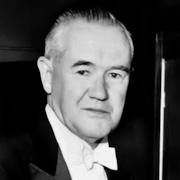 E. Power Biggs |
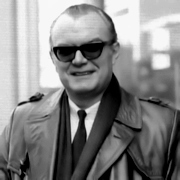 Fernando Valenti |
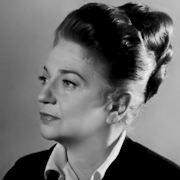 Sylvia Marlowe |
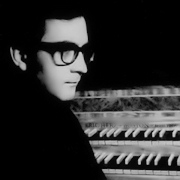 Joseph Payne |
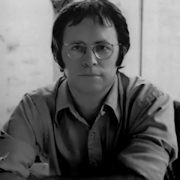 Anthony Newman |
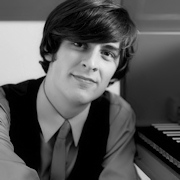 Christopher D. Lewis |
|
HERZ
Eric Herz (1919-2002) was born in Cologne, Germany. He played flute with the Israel Philharmonic before moving to the United States, where he spent two years working with Frank Hubbard and William Dowd. In 1953 he set up his own workshop in Harvard, Massachusetts, later moving to Cambridge. His instruments were loosely based on North European harpsichords, with the unique innovation of incorporating fiberglass into the case and soundboard. He retired in 1995. Like Challis, his instruments had a reputation for excellent craftsmanship. Joseph Payne made several popular recordings for Vox and RCA using Herz harpsichords, as did Anthony Newman for CBS. Other harpsichordists who recorded on Herz instruments include Gerald Ranck, Irma Rogell, and Susanne Shapiro. GEORG PHILIPP TELEMANN
Vox Box SVBX 5447 (LP) Recorded 1971
ANTONIO SOLER
MAURICE OHANA
HENRY PURCELL
DOMENICO SCARLATTI |
|
W E B S I T E S D E V O T E D T O EUROPEAN REVIVAL HARPSICHORDISTS
|